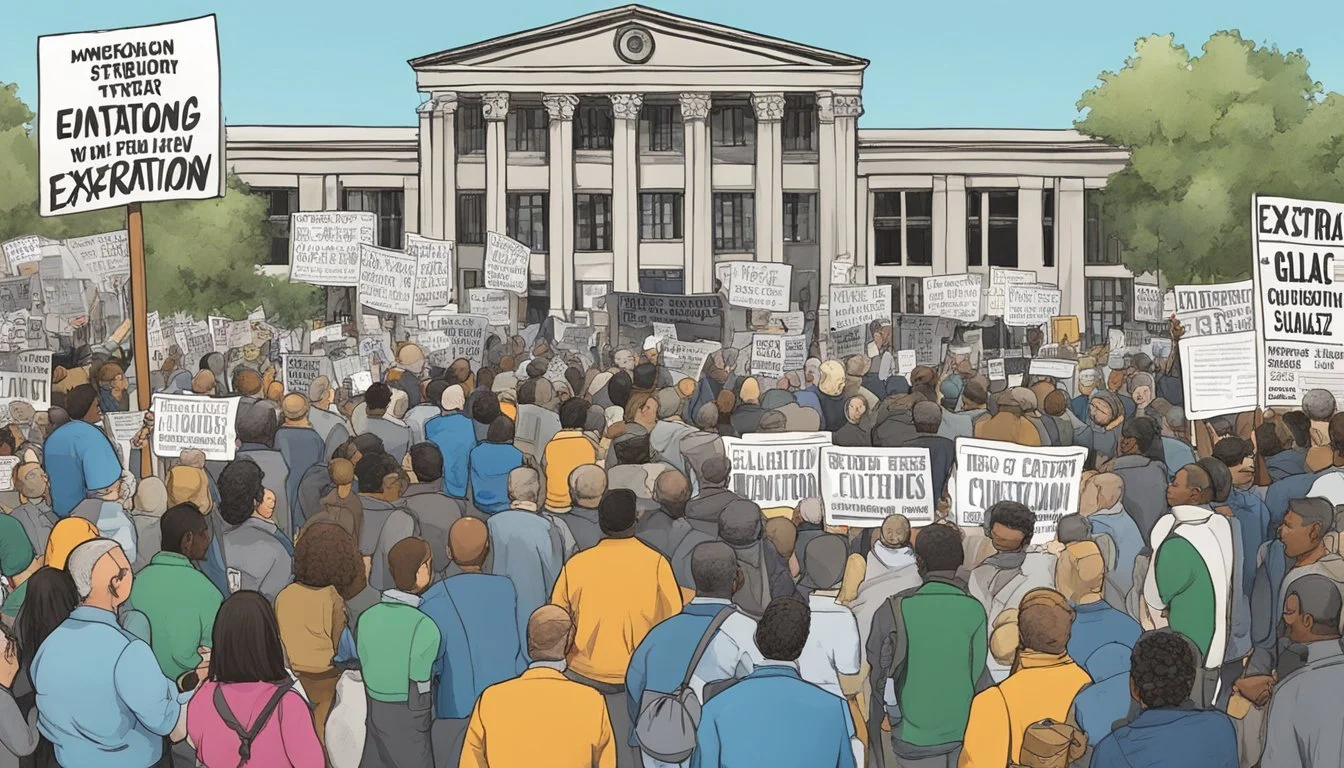Billy Glaze's Posthumous Freedom: Native Slayer's Exoneration Controversy Raises Questions About Justice System
Billy Glaze's case has long captivated public interest, raising questions about the criminal justice system and the exploitation of Native American traditions. Convicted of murdering three Native American women in Minnesota during the 1980s, Glaze spent 25 years in prison before his death in 2015. Recent DNA evidence has cast doubt on Glaze's guilt, potentially exonerating him posthumously and sparking controversy over his conviction.
The case exposed flaws in the justice system and highlighted the vulnerabilities of Native American communities. Glaze was dubbed the "Native Slayer" due to his alleged targeting of indigenous women. His conviction relied heavily on circumstantial evidence and witness testimony, with no physical evidence directly linking him to the crimes.
DNA testing conducted after Glaze's death revealed genetic material from a convicted rapist at two of the crime scenes, excluding Glaze as a contributor. This new evidence has reignited debates about wrongful convictions and the reliability of eyewitness testimony. The Innocence Project and other legal advocates continue to fight for Glaze's exoneration, seeking to clear his name and bring closure to the victims' families.
Background on Billy Glaze
Billy Glaze gained notoriety for his alleged involvement in multiple murders targeting Native American women in the 1980s. His case became controversial due to questions about the evidence used to convict him and subsequent DNA findings.
Early Life and History
Billy Glaze was born in the mid-20th century. Little is known about his early years or family background. He lived an ordinary life before becoming entangled in criminal investigations.
Glaze's background did not immediately suggest a propensity for violence. He moved between different areas, making it challenging to piece together a complete picture of his early adulthood.
His interactions with Native American communities began at some point, though the exact timeline remains unclear. These connections would later become central to the case against him.
Criminal Investigations
In the late 1980s, Billy Glaze became the focus of intense criminal investigations. Authorities linked him to the murders of three young Native American women in Minneapolis between 1986 and 1987.
The case drew significant attention due to the brutal nature of the crimes and the targeting of Indigenous victims. Investigators built their case against Glaze using available forensic techniques and witness testimonies.
In 1989, Glaze was convicted of the murders and sentenced to three life terms. He was transferred to Delaware State Penitentiary to serve his sentence.
Years later, newly discovered DNA evidence raised questions about Glaze's guilt. The Innocence Project and other legal teams began efforts to reexamine the case, potentially pointing to his innocence.
Conviction and Trial
Billy Glaze's case unfolded through a series of legal proceedings that led to his conviction for the murders of three Native American women in Minneapolis during the 1980s. The trial attracted significant attention due to the nature of the crimes and the evidence presented.
Arrest and Charges
In 1987, police arrested Billy Glaze for the murders of Kathleen Bullman, Angeline Whitebird Sweet, and Angela Green. Investigators linked Glaze to the crimes based on witness testimonies and circumstantial evidence. The charges included three counts of first-degree murder.
Prosecutors alleged that Glaze targeted Native American women, brutally killing them and leaving their bodies in public places. The case sparked outrage in the Native American community and raised concerns about the vulnerability of Indigenous women to violence.
Legal Proceedings
The trial began in 1989, with the prosecution presenting a case built largely on eyewitness accounts and Glaze's own statements. Key witnesses testified to seeing Glaze with the victims shortly before their deaths. The defense argued that the evidence was circumstantial and insufficient to prove guilt beyond a reasonable doubt.
Forensic evidence played a limited role in the trial, as DNA technology was not yet advanced enough to provide conclusive results. The prosecution relied heavily on Glaze's alleged confessions to fellow inmates and his history of violence against women.
Sentencing
In 1989, the jury found Billy Glaze guilty on all counts. The judge sentenced him to three consecutive life terms in prison. The severity of the sentence reflected the brutality of the crimes and the court's belief in Glaze's guilt.
Glaze maintained his innocence throughout the trial and subsequent appeals. His case would later become a subject of controversy when new DNA evidence emerged, casting doubt on his conviction. However, Glaze died in prison in 2015 before any potential exoneration could occur.
Posthumous Developments
Billy Glaze's case continued to evolve after his death in 2015. New evidence and legal efforts emerged to challenge his conviction.
Exoneration Efforts
The Innocence Project of Minnesota and the national Innocence Project led the charge to clear Glaze's name. They filed motions to pursue DNA testing and exoneration even after his passing. This unusual legal move raised questions about posthumous justice.
The attorneys argued that proving Glaze's innocence could help prevent future wrongful convictions. They also sought to restore his reputation and provide closure for his family.
Several courts have allowed posthumous exoneration attempts in other states. Florida and Texas set precedents by permitting such cases to proceed.
New Forensic Evidence
DNA testing unavailable at the time of Glaze's trial revealed compelling information. Tests on crime scene evidence did not match Glaze's DNA profile.
Instead, the DNA pointed to another potential suspect. This individual had a history of violence against Native American women.
Advances in forensic technology allowed for more precise analysis of physical evidence. This included hair samples and other biological materials found at the murder scenes.
The new findings cast doubt on the reliability of the original investigation and prosecution's case against Glaze.
Justice System Flaws
Glaze's case highlighted several issues within the criminal justice system. The lack of physical evidence linking him to the crimes raised concerns about the strength of circumstantial cases.
Racial bias may have played a role in the investigation and trial. The victims were Native American women, a group often marginalized in society and the legal system.
The difficulty in securing a posthumous hearing demonstrated the system's rigidity. It exposed the challenges in correcting potential errors after a conviction, even with new evidence.
Glaze's death before resolution of his case underscored the importance of timely reviews of convictions when new information comes to light.
Public and Legal Reactions
The Billy Glaze case sparked intense debate and activism across multiple sectors of society. Media coverage, advocacy efforts, and law enforcement responses evolved as new evidence emerged.
Media Coverage
News outlets extensively reported on Billy Glaze's conviction and subsequent exoneration efforts. Initial coverage focused on the brutal nature of the crimes and Glaze's background. As DNA evidence surfaced, media narratives shifted to question the original verdict.
Local Minnesota papers provided in-depth coverage, while national outlets highlighted broader issues of wrongful convictions. Investigative journalists delved into the case details, interviewing key figures and examining court documents.
Some outlets faced criticism for sensationalizing aspects of the murders. Others were praised for balanced reporting on the complex legal proceedings.
Activism and Advocacy
Innocence Project organizations spearheaded efforts to exonerate Glaze. They collaborated with pro bono lawyers to file legal motions and conduct additional DNA testing.
Native American groups advocated for justice for the victims while also raising concerns about systemic biases in the legal system. They organized vigils, protests, and awareness campaigns.
Online petitions and social media campaigns gained traction, drawing public attention to Glaze's case. Supporters argued for his posthumous exoneration, citing the new DNA evidence.
Critics maintained Glaze's guilt, emphasizing the original trial evidence and witness testimonies.
Law Enforcement Perspective
Police and prosecutors initially stood by the conviction, pointing to the strength of the original case against Glaze. Some officials expressed skepticism about the new DNA evidence, suggesting alternative explanations.
As legal challenges mounted, law enforcement agencies faced pressure to re-examine the case. Some detectives who worked on the original investigation publicly defended their methods and conclusions.
Others in law enforcement acknowledged the potential for wrongful conviction, calling for a thorough review of the evidence. Debates emerged within police departments about best practices for handling cold cases and new forensic technologies.
The Broader Impact
Billy Glaze's case highlights significant issues in the criminal justice system, forensic science, and policies surrounding wrongful convictions. It raises questions about the reliability of evidence and the need for reform in legal procedures.
Implications for Wrongful Convictions
The Glaze case underscores the prevalence of wrongful convictions in the United States. It demonstrates how flawed evidence and investigative techniques can lead to unjust outcomes.
This case prompts a reevaluation of past convictions, especially those relying heavily on circumstantial evidence or outdated forensic methods. It emphasizes the importance of thorough post-conviction reviews.
The exoneration effort also sheds light on the challenges faced by incarcerated individuals seeking to prove their innocence, particularly after their death.
Future of Forensic Science
Glaze's case showcases the evolving nature of forensic science and its impact on criminal investigations. The DNA evidence that emerged years after his conviction illustrates the rapid advancements in this field.
This situation prompts forensic labs to reassess their methodologies and stay current with technological developments. It highlights the need for continuous training and education for forensic experts.
The case also emphasizes the importance of preserving evidence for future testing, as new techniques may emerge that could shed light on old cases.
Policy Changes and Legal Precedents
The controversy surrounding Glaze's potential exoneration has sparked discussions about necessary policy changes. It raises questions about the handling of posthumous exoneration cases and the rights of the deceased.
Legal experts are now examining how to address situations where new evidence emerges after a convict's death. This could lead to the establishment of new legal precedents for similar cases in the future.
The case may also influence policies regarding the preservation and retesting of evidence, potentially extending statutes of limitations for certain types of crimes.





